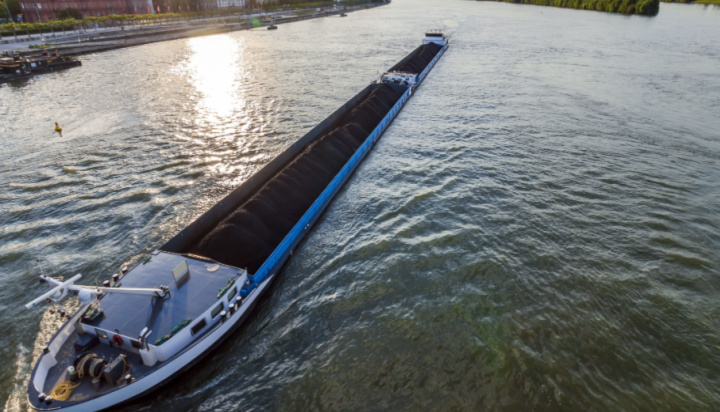
Germany is on the way to Rhine-dry.
A critical waterway for the transportation of coal and other goods could reportedly become “impassable” for barges carrying coal and oil because of the prolonged dry season that is hitting the country.
Coal-fired power plants and steel manufacturers rely on the Rhine for receiving raw materials.
According to reports, on the 7th of August, the water level at this critical passage dropped to 49 centimetres.
It is expected that this will fall further to 40 centimetres which makes it “uneconomical” for barges to sail.
According to data from the Central Commission for the Navigation of the Rhine, the fleet passing through the Rhine can be estimated at around 6,900 vessels, representing a transport capacity of 10 million tonnes.
Of these, nearly 1,200 are pushed barges, 4,400 motor cargo vessels and 1,300 tankers.
Last week, Uniper warned over the reduced output of its coal power stations as it struggled to get enough coal supplies.
A Federal Waterways and Shipping Administration (WSV) spokesperson told ELN: “Navigation on the Rhine is possible throughout. Ships are currently travelling with less than half the usual cargo volumes.
“The water depth on the Rhine is currently approximately 25 centimetres higher compared to the lowest water level in 2018.
“According to the forecasts, a water level of 38 centimetres is expected at the Kaub gauge on Friday. This means a navigation channel depth of 150 cm.
“The low water levels have a particular effect in the area of the Middle Rhine Rheingau and Middle Rhine. The Kaub gauge is decisive for the unloading depth of ships in this section.
“In contrast to high water, there is no general ban on navigation at low water. Based on the water level forecasts, inland navigation is informed about the development of the water levels, adjusts the cargo quantities accordingly or uses ships with less depth.
“On the Rhine, navigation can largely adapt to the water level by reducing the unloading depth and using smaller vessels with shallower draughts.
“Even in the low water year 2018, the Rhine was navigable for commercial shipping throughout, partly with strongly restricted unloading depths.”